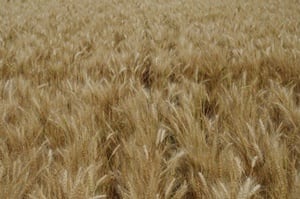Hybrids Poised to Change Wheat Production
Syngenta researchers are developing hybrid wheat in a quest to help boost yields.

"We are moving from developing leading conventional varieties to commercializing wheat hybrids," Iglesias says. "We have gone through a proof of concept protocol, which has been successful, and now we're developing the technology to launch the first hybrids by the end of this decade."
Most researchers agree that hybrid wheat, produced by crossing two pure lines, is the key to increasing wheat yields. That's because the resulting hybrid generally has higher yield potential and consistency than either of its parents. Higher-yielding wheat is something the world will demand, as populations grow through the middle of this century. The World Bank estimates the output of wheat will have to climb by 60 percent from 2000 to 2050 to meet rising demand, and we are well positioned to meet that challenge.
Syngenta breeders are doing their part by re-engineering wheat from a self-pollinated crop into one that can be cross-pollinated reliably and efficiently. "We need hybrids that will deliver sustained performance improvement," Iglesias says. "There is great expectation around hybrid wheat, and we are confident we will succeed in bringing superior hybrids to the market that will help our customers succeed and enhance the world's capacity to feed a growing population."

